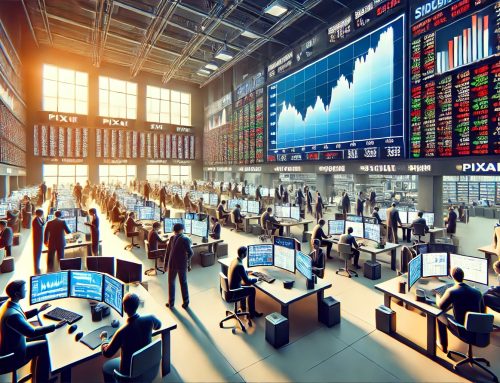August 11, 2022
The inflation rate in Germany, measured as the year-on-year change in the consumer price index, stood at +7.5% in July 2022. Although the rate of inflation was slightly down again, it remained at a high level clearly above 7%. In June 2022, the inflation rate had stood at +7.6% and in May 2022 at +7.9%. “The main reason for the high inflation still is price rises for energy products. Two measures of the relief package have had a slight downward effect on the overall inflation rate since June 2022: the 9-euro ticket and the fuel discount. In addition, the EEG surcharge was abolished in July 2022”, says Dr. Georg Thiel, President of the Federal Statistical Office. The Federal Statistical Office (Destatis) also reports that consumer prices in July 2022 were up 0.9% on June 2022.
Relief measures have only slight downward effect on the increase in prices caused by the situation of war and crisis
The introduction of the 9-euro ticket, which took effect on 1 June 2022 and is limited to three months, had a downward effect on prices in public regional and short-distance passenger transport. Also, the reduction of the mineral-oil tax (fuel discount) has reduced motor fuel prices since June 2022. The year-on-year increase in transport prices (+5.4%) eased as a result. In June, the rate of price increase had been +8.3%, in May +16.3%. In addition, the EEG surcharge was abolished in July 2022, which had amounted to 3.7 cents per kilowatt hour of electricity since the beginning of the year. This also had a slight downward effect on the increase in electricity prices.
Despite the special effects, the increase in prices of all energy products caused by the situation of war and crisis is still a major factor determining the inflation rate. Additional factors are again delivery bottlenecks due to interruptions in supply chains and marked price increases at upstream stages in the economic process. This led to price rises not only for energy products, but also for other goods and services, especially many food products again.
Energy product prices up 35.5% year on year despite relief measures
Energy product prices in July 2022 were by 35.5% higher than in the same month a year earlier, following a +38.0% increase in June 2022. The year-on-year increase in electricity prices was +18.1%, decreasing slightly especially due to the abolishment of the EEG surcharge (June 2022: +22.0%). Since the fuel discount took effect in June 2022, the increase in motor fuel prices has slowed, too. The increase here was +23.0% in July (June 2022: +33.2%, May 2022: +41.0%). Prices of other energy products, too, rose markedly from July 2021 to July 2022. Heating oil prices more than doubled (+102.6%). The increase in natural gas prices, for example, was +75.1%. The price rise for energy products thus was markedly higher than the overall inflation rate despite the relief measures because it is influenced by several factors – among other things the international purchase prices and the CO2 charge.
14.8% increase in food prices year on year
Food prices were up 14.8% in July 2022 year on year. The price increase thus rose for the fifth month in a row. Price rises were recorded for all food groups in July 2022. Prices were considerably up for edible fats and oils (+44.2%) and for dairy products and eggs (+24.2%). Two-digit rates of price increase were also recorded for other food groups such as meat and meat products (+18.3%).
Prices of goods up 14.1% on July 2021
Prices of goods (total), which also include energy products and food, rose considerably in July 2022 year on year (+14.1%, of which non-durable consumer goods: +18.8%; durable consumer goods: +5.4%).
Inflation rate excluding energy and food at +3.2%
Excluding energy prices, the inflation rate stood at +4.4% in July 2022. To what extent food prices currently affect the overall rate of price increase is shown by the inflation rate when energy and food are excluded. It stood at +3.2%, which is not even half the overall inflation rate.
Service prices rose by just 2.0% year on year, downward effect of the 9-euro ticket continues
The prices of services (total) were up 2.0% in July 2022 on the same month of the previous year. In June 2022, the rate of price increase had been +2.1%. A major reason for the slower price increase as of June 2022 was the introduction of the 9-euro ticke. It led to marked price reductions in public passenger transport. In July 2022 prices were down year on year both for rail tickets in short-distance transport (-43.9%) and for the combined tickets for rail, bus and the like (-63.0%). Also, services of social facilities (-2.2%) and telecommunications services (-1.2%) were down year on year, as had been the case in the previous months. Net rents exclusive of heating expenses were up 1.7%. Also, the prices of some services went up considerably, including the maintenance and repair of dwellings and residential buildings (+14.2%) and of vehicles (+6.7%).
Food prices up again (+2.3%) on the previous month
Compared with June 2022, the consumer price index was up by 0.9% in July 2022. Especially prices of package holidays went up (+15.2%) in the vacation month of July. Households had to pay more again for food in general (+2.3%, including dairy products: +9.2%). Energy prices (total) fell slightly (-0.3%), with motor fuel prices falling by 5.3%and electricity prices by 3.3%. The latter was mainly due to the abolishment of the EEG surcharge. Price increases in the energy sector were also observed, especially for natural gas (+9.2%). The prices of clothing and footwear were also down (-2.7%), which was mainly due to reductions in the prices of summer articles.
Methodological notes:
In view of the high prices, the Federal Government adopted a second relief package. It comprises various measures such as a public passenger transport ticket at a price of 9 euros per month (9-euro ticket) available from June to August 2022 and the reduction of the mineral oil tax on motor fuels (fuel discount). In addition, the abolishment of the EEG surcharge became effective. These three special effects are reflected in the index of consumer price statistics.
The Covid-19 pandemic and its consequences for public life required a changed approach to the annual updating of the product weights used in the harmonised index of consumer prices (HICP). A methodological paper which discusses this issue is provided on the website of the Federal Statistical Office. The updating of the HICP product weights is an explanation of a considerable part of the difference between the CPI and the HICP for Germany. Most of the measures taken to contain the Covid-19 pandemic had been abolished by July 2022, so that they no longer impaired the quality of the results, see methodological paper.
Inflation Calculator informs about personal rate of inflation:
Consumers can use the Personal Inflation Calculator of the Federal Statistical Office to adapt their monthly consumption expenditure on individual product groups according to their own consumption patterns and to calculate their personal inflation rate.
Source: DESTATIS
Legal Notice: The information in this article is intended for information purposes only. It is not intended for professional information purposes specific to a person or an institution. Every institution has different requirements because of its own circumstances even though they bear a resemblance to each other. Consequently, it is your interest to consult on an expert before taking a decision based on information stated in this article and putting into practice. Neither Karen Audit nor related person or institutions are not responsible for any damages or losses that might occur in consequence of the use of the information in this article by private or formal, real or legal person and institutions.






